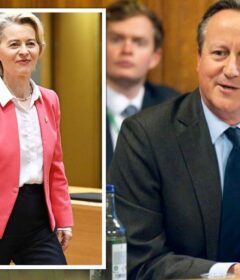Election 2020: Sir Michael Cullen on Labour’s historic victory – no mandate to scare the centre
Sir Cullen Michael says Labour’s historic victory is a green light for much needed changes in climate action and transport infrastructure.
But it is not a mandate for a lurch to the left in terms of tax or welfare reform, and any attempt to do so quickly could risk “middle-ground voters jumping off a cliff”, the former Finance Minister told the Herald.
Last night Labour secured a parliamentary majority with 64 seats, the party’s best result under MMP and its strongest showing since 1946, when Labour won 51 per cent of the party vote.
National plunged to 26.8 per cent, its second-worst result ever, with 2002 being its only worse result.
He said Labour played a “very safe” campaign, including its tax policy that would only affect 2 per cent of income earners.
“I can understand their nervousness … but without additional revenue, and given the Covid-19 flow-on, they are somewhat restricted.
“We’re locked into programme for three years in terms of tax generally. Its more immediate problem is that any feasible tax programme is going to have a very minor bearing on the size of deficits in the next three years.
“I do have to admit that one or two points I was worried they were being too safe. But in the end, that paid off and allowed Jacinda to project that image of competence, combined with kindness, and an occasional spark of severity when dealing with Judith Collins.”
He said Labour had a strong mandate on climate change action, transport infrastructure and tackling poverty, though on the latter he agreed with Ardern that lasting change came in increments rather than in leaps and bounds.
“Jacinda has a mandate for some quite significant change, but in areas like the welfare system and poverty, it is a matter of progressive change over a period of years.”
Cullen said National voters had shifted to Labour over the Government’s successful Covid response and, to a much lesser degree, to strengthen Labour’s hand against Green influence.
“And there were definitely Labour people who were worried the Greens might not make the 5 per cent threshold and who switched their party vote to ensure that happened.”
He noted National’s issues with leadership changes and campaign bungles including caucus leaks and signs of disunity.
“People were disillusioned with National. It was a bit like 2002, when National got a lot less than in the polls as people gave up on them. Clearly a lot of National people voted Act this time.”
NZ First leader Winston Peters also played the wrong hand in criticising “wokeness” and “pixie dust”, he said.
“Winston spent two or three weeks attacking Labour, and attacking Jacinda in code-language.
“He should have been making more of what NZ First had done positively, sort of hugging Jacinda close to him in the same way James Shaw did. Shaw seemed to be getting as close to Jacinda under the umbrella as he could.”
His advice to Peters?
“Retire. Imagine him coming back at 78 next time around. What as? The grumpy old vote is almost by definition declining, despite the fact the population is getting older, and his time has passed.”
He said the Greens should be careful about getting into a coalition arrangement, nothing how poorly minor parties have fared in the past, including the fate of NZ First in 2008 and in 2020.
“Think very carefully before getting too closely locked in to the web of government. The history of minor parties who do that, if and when the Government starts to get a little unpopular, is not encouraging.
“The minor parties have a real struggle coping with the stresses and responsibility for decisions that aren’t popular with everybody. We’ve had a variety of loose arrangements under MMP, and the looser the better.
“They can still have an influence, but that will be limited anyway because ultimately they don’t have the votes to stop Labour from doing anything.”
Labour:
1938 – 55.8 per cent
1946 – 51.3 per cent
2020 – 49.1 per cent
1972 – 48.4 per cent
1957 – 48.3 per cent
1987 – 48 per cent
1943 – 47.6 per cent
1949 – 47.2 per cent
1951 – 45.8 per cent
2002 – 41.3 per cent
National:
2002 – 20.9 per cent
2020 – 26.8 per cent
1999 – 30.5 per cent
1996 – 33.9 per cent
1993 – 35. 1 per cent
1984 – 35.9 per cent
1981 – 38.8 per cent
2005 – 39.1 per cent
1987 – 39.2 per cent
1978 – 39.8 per cent
Source: Read Full Article


